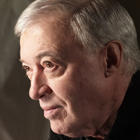A Subway Token and a Dollar Tucked Inside My Shoe
This famous line was from one of the rare country music tunes written about NYC: Glen Campbell's "Rhinestone Cowboy."
Back in the 70's many of us did indeed travel with money in concealed places: our shoes, inside secret pockets inside of belts, pants cuffs - some women even stashed it in their bras. This made for interesting encounters in stores.
Crime was an over-riding concern in that era, especially when it came to the subways. Who could blame those who rode the subways late at night for being nervous? They were far less crowded than they are nowadays; graffiti was everywhere in platforms often stank of urine. Interestingly, though, studies showed that the majority of subway crimes were NOT committed late at night, but during the afternoons when kids were coming home from school. (I had a professor who got upset hearing that, worrying that it might somehow imply that the little cherubs who snatched purses and chains were somehow at fault for their behavior). As for the worst stations, a survey I read in 1979 listed them in this order:
1. Times Square
2. 42 St and 6 Ave
3. Grand Central Station
Back in the 70's many of us did indeed travel with money in concealed places: our shoes, inside secret pockets inside of belts, pants cuffs - some women even stashed it in their bras. This made for interesting encounters in stores.
Crime was an over-riding concern in that era, especially when it came to the subways. Who could blame those who rode the subways late at night for being nervous? They were far less crowded than they are nowadays; graffiti was everywhere in platforms often stank of urine. Interestingly, though, studies showed that the majority of subway crimes were NOT committed late at night, but during the afternoons when kids were coming home from school. (I had a professor who got upset hearing that, worrying that it might somehow imply that the little cherubs who snatched purses and chains were somehow at fault for their behavior). As for the worst stations, a survey I read in 1979 listed them in this order:
1. Times Square
2. 42 St and 6 Ave
3. Grand Central Station



 making more requests. I suspect that he had been rapidly consuming the six-pack the police sent to him. Olsen did not sound like a political ideologue, but a tipsy rock and roll fan. He ended:
making more requests. I suspect that he had been rapidly consuming the six-pack the police sent to him. Olsen did not sound like a political ideologue, but a tipsy rock and roll fan. He ended: